 The
collecting of antiquities must be among the oldest of human hobbies.
Whether a person acquires items for study, cultural preservation,
aesthetic pleasure, or a combination of other reasons, it's hard not to
be fascinated by an object from the ancient past.
The
collecting of antiquities must be among the oldest of human hobbies.
Whether a person acquires items for study, cultural preservation,
aesthetic pleasure, or a combination of other reasons, it's hard not to
be fascinated by an object from the ancient past.
While the media has focused on the treasures of Tutankhamun or the Elgin
Marbles, hidden within most museums are countless smaller objects, the
items from the everyday lives of ordinary people. Many objects like
these are available in the antiquities market.
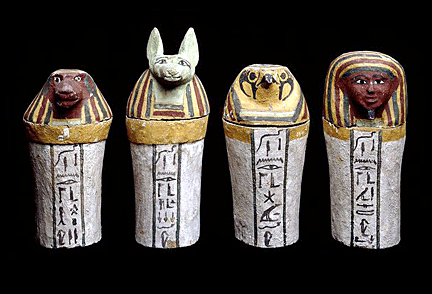 Part
of the appeal of antiquities, usually defined as objects created in the
Mediterranean region, is the connection with long-disappeared
civilizations that nonetheless have a link with the present day.
Part
of the appeal of antiquities, usually defined as objects created in the
Mediterranean region, is the connection with long-disappeared
civilizations that nonetheless have a link with the present day.
Sometimes, they’re objects of great beauty or made with extraordinary
technical skillt. They could be works of art or more everyday objects
such as a Roman unguentarium, a glass container for oil. Unlike modern
day antiques, antiquities tend to hold their value.
 Most
of the antiquities which survive today weren’t intended by their makers
to be anything more than utilitarian or sometimes ritual objects,
surviving more by chance than intention. These antiquities often
pre-date modern religions and national boundaries.
Most
of the antiquities which survive today weren’t intended by their makers
to be anything more than utilitarian or sometimes ritual objects,
surviving more by chance than intention. These antiquities often
pre-date modern religions and national boundaries.
Although an object may provide useful artistic or historical
information, much academic research relies on the location and
conditions of excavation. Until the advent of modern archaeological
methods in the 20th Century, few antiquarians or museums paid much
attention to the excavation context of their acquisitions.
Large quantities of antiquities appeared in commercial markets and
private collections during the 18th, 19th and much of the 20th
centuries. They are generally known as provenanced antiquities to
distinguish them from the illicit trade involving modern-day looting of
archaeological or cultural sites. Responsible dealers, collectors, and
museums have
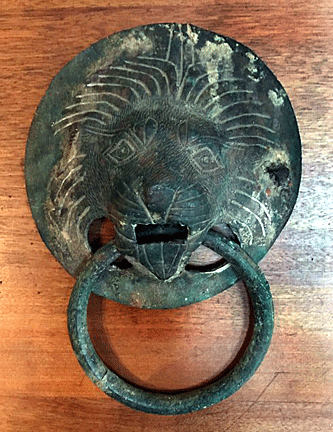 learned
the importance of studying collections and excavation histories in order
to obtain data for future generations and also as a tool to avoid
illicit objects.
learned
the importance of studying collections and excavation histories in order
to obtain data for future generations and also as a tool to avoid
illicit objects.
Generally, antiquities come with paperwork detailing not only their age,
culture, and description but also the collection information known at
the time of the sale.
In recent years, the number of objects looted from ancient sites and
museums has increased dramatically due to regional wars and conflicts.
Most notable was the looting of artifacts from the Bagdad Museum in
Bagdad, Iraq, in 2003. But many ancient objects were never looted from
historic sites or even dug out of the ground.
 Almost
every country except the United States has enacted laws to limit or
prohibit the export of cultural property older than a specified number
of years. And because of this, no more artifacts seem to be coming out
of these countries, leaving a dwindling supply of ancient objects that
hasn’t already been donated to museums or purchased by collectors.
Almost
every country except the United States has enacted laws to limit or
prohibit the export of cultural property older than a specified number
of years. And because of this, no more artifacts seem to be coming out
of these countries, leaving a dwindling supply of ancient objects that
hasn’t already been donated to museums or purchased by collectors.
Ironically, there seems to always be more antiquities on the market and
dealers to sell them. The collecting of antiquities by unscrupulous and
greedy collectors encourages looting and smuggling, as well as
government corruption.
But no matter what the object, it’s up to the collector to do due
diligence in investigating whether objects brought to their attention
have a clear and legal ownership or something more murky. But what
constitutes due diligence seems to be rather vague.
Conducting Due Diligence
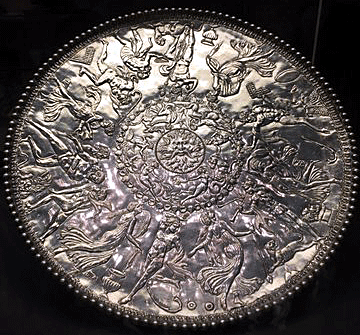 Whatever
due diligence is, it’s not easy. First and foremost, a prospective buyer
should investigate import and export licenses for objects—were they
legal to take out of the source country and were they legal to bring
into the U.S. Secondly, the buyer should obtain a history of the piece’s
ownership as far back as possible. Thirdly, a buyer should also contact
the cultural ministry in the country from which the object originated to
learn whether the piece has been listed as stolen.
Whatever
due diligence is, it’s not easy. First and foremost, a prospective buyer
should investigate import and export licenses for objects—were they
legal to take out of the source country and were they legal to bring
into the U.S. Secondly, the buyer should obtain a history of the piece’s
ownership as far back as possible. Thirdly, a buyer should also contact
the cultural ministry in the country from which the object originated to
learn whether the piece has been listed as stolen.
Unfortunately, provenance can be faked, especially for smaller and less
important objects. The Art Loss Register only contains information on
objects stolen from public collections, not on pieces dug up illegally
from an archaeological site and smuggled out of the country. Contacting
ministries of source countries may be frustrating, since they have a
reputation for not responding to inquiries, and when they do reply to a
query, they’ll often just say, ‘It’s ours. Give it back,” without any
basis for the claim.
 Another
problem arises if there’s no paper trail, such as import and export
licenses, documentation of where the object came from, and who has owned
it since it was first discovered. Was the antiquity brought out of the
source country prior to the UNESCO treaty of 1970, when a certain level
of documentation was less common, or more recently smuggled? A high
percentage of ancient objects come with no paperwork—perhaps someone
brought an entire collection of antiquities out of a country with a
receipt for the lot, but later the collection was broken up, with
individual objects going here and there with no identifying source
material, and hardly any information about its original in-situ
location.
Another
problem arises if there’s no paper trail, such as import and export
licenses, documentation of where the object came from, and who has owned
it since it was first discovered. Was the antiquity brought out of the
source country prior to the UNESCO treaty of 1970, when a certain level
of documentation was less common, or more recently smuggled? A high
percentage of ancient objects come with no paperwork—perhaps someone
brought an entire collection of antiquities out of a country with a
receipt for the lot, but later the collection was broken up, with
individual objects going here and there with no identifying source
material, and hardly any information about its original in-situ
location.
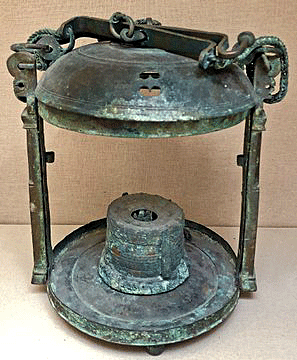 While
collecting antiquities can be profitable, their provenances can also
bite back. Governments take a greater interest in whether artifacts may
have left the country illegally and sales become more politically
loaded. A collector could conceivably buy an ancient artifact, only to
have it confiscated by the source country later on, thus not only losing
the object but also the money invested in it as well.
While
collecting antiquities can be profitable, their provenances can also
bite back. Governments take a greater interest in whether artifacts may
have left the country illegally and sales become more politically
loaded. A collector could conceivably buy an ancient artifact, only to
have it confiscated by the source country later on, thus not only losing
the object but also the money invested in it as well.
A few decades ago, dealers, auction houses, and collectors felt much
less pressure to trace back the ownership of an object to discover if it
had been legally obtained. Today, provenance has become a hot issue as
buyers seek assurances that they aren’t buying illegal or looted pieces,
especially where cultural ministries are increasingly challenging the
ownership of objects that come up for public sale.
Would-be buyers of antiquities should exercise maximum caution when
considering a purchase. If they open any catalogue from an auction house
or antiquities dealer to check how many objects have export licences
from the true country of origin, they’ll usually find there are none.
That can leave buyers at risk, since there’s no documentary proof that
an object left its country of origin legally. In fact, buyers should
take the initiative to contact the relevant culture ministries in the
countries from which an ancient object originated to check that it’s
sale is legitimate.
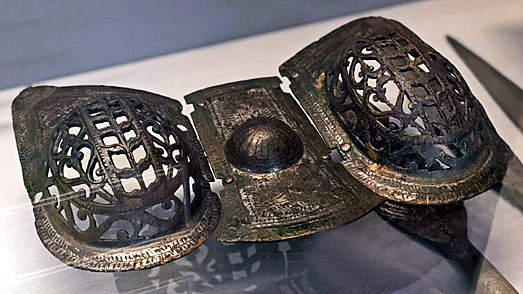
When it comes to the buying antiquities, either at auction or directly
from an antiquities dealer, buyers should consider a term often
expressed in ancient Rome: Caveat emptor (Let the buyer beware).
< Back to Collecting Archives
Next Article >
